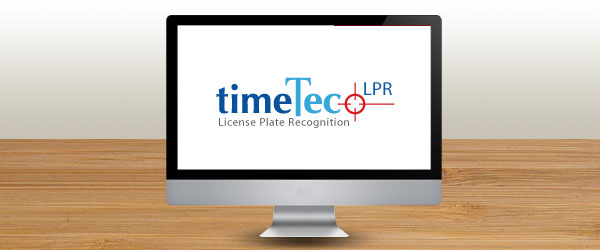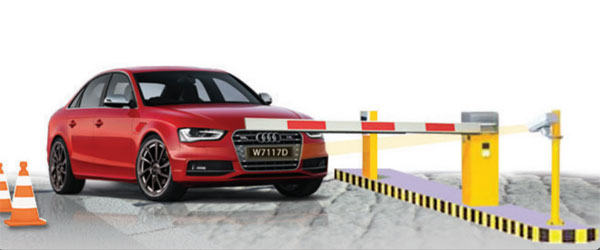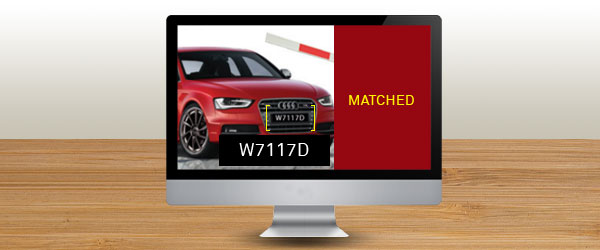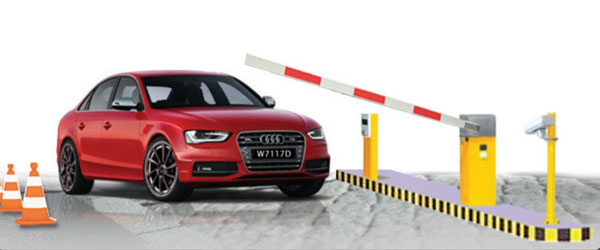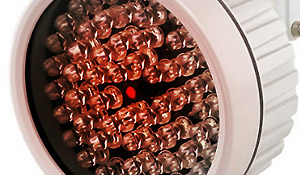| Brochure |
: |
|
| Brochure IP Camera |
: |
|
|
: |
|
| LPR Camera Installation Guide |
: |
|
License Plate Recognition
There are a whopping 1.02 billion vehicles in the world and each legitimate vehicle comes with a vehicle registration plate, known as number plate or license plate for official identification purposes. All countries make registration plates mandatory for road vehicles such as cars, trucks, and motorcycles, and the registration identifier is a combination of numeric or alphanumeric ID to specifically identify the vehicle owner. There are numerous types of license plates around the world with complex combination of alphanumeric characters and due to the rising needs to identify these plates, License Plate Recognition (LPR) Technology was created. The LPR technology had undergone major progress and now it is ready to be commercialized to automate vehicle access and to deal with security issues involving registered vehicles.
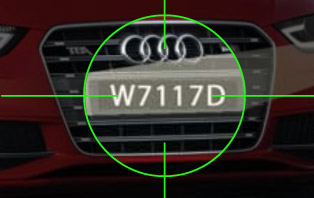
Components of License Plate Recognition
License Plate Recognition, acronym LPR usually involves capturing of photographic videos or images of the plate, which then processes by specific algorithms to produce the alphanumeric text entry of the plate for record purposes. TimeTec Smart License Plate Recognition LPR is an ultramodern technology, incorporating Algorithms and Optical Character Recognition (OCR) technology as fundamental to integrate our recognition algorithm and LPR camera to convert a scanned image into a readable alphanumeric text at greatest accuracy. TimeTec trains our algorithm to cater to all types of license plates in order to maximize its recognition power.
The Complexity of License Plate Recognition Algorithms
Due to the inconsistency and complexity of license plate variances, the algorithms must be able to distinguish which part of the vehicle is actually a license plate and derive an accurate results across various disturbances along the way.
 |
| License Plate Localization |
| • |
A neural network based localization algorithm will locate the location of the license plate. |
| • |
License plate usually consists of standard features, such as color – Black/White, White/Black, Red/White |
| • |
Consists edges which come from standard patterns (Here referring to A-Z, 0-9) |
| • |
Localization algorithm is trained with few ten thousand of images, to be able to recognize the pattern of license plate in an image |
| • |
This trained model will then be used for license plate localization. It is one of the supervised training method |
 |
| Convert Image to Grayscale |
| • |
Once the location of license plate is confirm, the region license plate will be cropped and converted into grayscale. License plate is considered as binary image, colour information is no longer useful in further analysis |
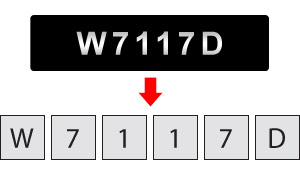 |
| Character Segmentation |
| • |
The license plate usually consist of 7-8 characters (Exp: ABC 1234, WAA 1234 B). The algorithm will then segmented the character out of the license plate |
| • |
It is achieved by finding connected components in a license plate |
| • |
For ABC 1234, it will be having 7 connected components |
 |
| Noise Filtering |
| • |
It is common that IP camera will pick up some noise in license plate, sometimes, it is due to the license plate itself is not clean. Many noises will appear after the segmentation process |
| • |
Noise filtering will filter relatively big/small noise compare to the license plate itself. After this process, the segmentation result (after denoising) will contain only characters |
 |
| Character Recognition |
| • |
Each character has unique edges and orientation |
| • |
These features are used to train a classifier. (similar to neural network) |
| • |
This classifier will then take character from segmentation output and classify which character it is (A-Z, 0-9) |
| • |
For each connected components, classifier will perform character classification. (Exp, ABC 1234), classifier will perform classification 7 times |
| • |
At the end of classification, we have 7 character results |
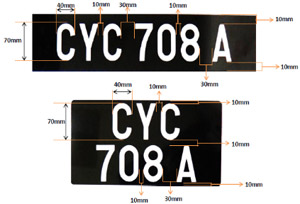 |
| Character Organization |
| • |
From the segmentation result, the location of the character is known |
| • |
For Malaysia license plate, it is always top to down, left to right |
| • |
The output from classifier will then arrange the result based on the location of the segmentation output |
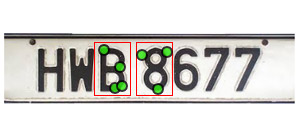 |
| License Plate Rules |
| • |
Recognition process is not always 100% accurate |
| • |
For some license plate, or special cases, (such as B and 8, S and 5), classifier might give wrong result |
| • |
There is rules to correct the result in case classifier is not performing well |
| • |
Sample of rules: |
| |
| › |
Character always comes before or after the numbers. It will never come in between. (Except special one, like 1M4U) |
| › |
There are max 3 characters at the front, and 1 at the back. Minimum one number, and maximum 4 numbers |
|
Components Required For LPR
Deployment of LPR technology does not require complicated hardware installation, instead you need to invest on LPR cameras for each lane and a PC to process the information:
1. LPR Camera to capture the license plate number for processing

| Camera Type |
|
IP Camera |
| System |
|
Embedded RTOS design |
| Camera |
Effective Pixels |
3.0 Mega Pixels |
| Main stream:2048*1536;1920*1080 |
| Sub stream:704*576 |
| Frames Rates |
PAL:20fps(2048*1536), 25fps(1920*1080) |
| NTSC:20fps(2048*1536), 30fps(1920*1080) |
| Image Sensor |
1/3 Aptina CMOS Sensor |
| 3.5 Megapixel resolution (2304H*1536V) |
| DSP |
Dual core 32-bit DSP |
| (A5S88) |
| Min. Illumination |
Color 0.01Lux/F1.2 |
| B/W 0.001 Lux/F1.2 |
| Adjust Parameters |
DWDR,BLC,DNR,AE,AGC,D&N,Mirror,Flip,etc. |
| Video |
Compression |
H.264 Main profile |
| Stream |
Support dual stream,AVI format |
| Bit Rate |
Support 0.1M ~8Mpbs bit rate adjustable |
| Frame Rates |
Support 1~30fps adjust |
| Audio |
Input and output |
1ch input( micphone), 1ch output( Speaker&micphone) Optional |
| Compression |
G.711 compression,support two-way audio intercom,support audio & video synchronized output |
| Alarm |
Types |
Motion Detection, Video Blind , Video Loss |
| Network |
WEB Browser |
Support WEB remote config( IE, Safari, Google Chrome, Firefox etc.) |
| Smart Phone |
Mobile remote Monitoring (iPhone,Android,Windows Mobile,BlackBerry,Symbian) |
| CMS Software |
Uniform CMS Software(multiple devices management system) |
| Cloud P2P |
www.p2pipc.net,MYEYE platform and other program,Offer SDK |
| Network |
1 * RJ45,10/100M,Support RTSP/FTP/PPPOE/DHCP/DDNS/NTP/UPnP/SMTP |
| ONVIF |
Support (ONVIF 2.0) |
| POE |
Support(optional) |
| WIFI |
N/A |
| General |
Language |
English, Finnish, French, German, Greek,Italian, Japanese, Polish, Portuguese, Russian, Spanish, |
| Thai, Chinese & Turkish |
| IR Cut Filter |
Set of double light switch IR-CUT filter |
| Lens Mount |
Varicoal Lens 9-22mm (3MP) |
| Infrared Luminary |
4 pieces Array White light LED |
| Infrared Wavelength |
More than 30 M |
| Waterproof Criterion |
IP 66 |
| I/O Connector |
1*DC Connector ,1* RJ45(10/100M Network) |
| Supplied Voltage |
DC12V/PoE(802.3af/820.3at) |
| Power Consumption |
IR On: 600mA max., IR Off: Less than 200mA |
| Working Enviroment |
IR On: 600mA max., IR Off: Less than 200mA |
Camera Components Required:
Fast shutter speed to lessen motion blur
LPR has to deal with vehicle velocity and the velocity vary from one vehicle to another. To implement LPR, cameras with fast shutter speed of at least 1/1000 sec is a must to cater to high speed vehicle's velocity
Cameras that reduce glare and reflected light
The use of eclipse cameras is necessary to reduce the headlight glare and reflected light from a vehicle. The eclipse camera refracts the light toward the vehicle, to produce a clear image
Cameras that have night vision
Infrared cameras need to be available to handle reading in areas of low light or in total darkness. A night vision camera works in complete darkness, 0 LUX, without any light because it sees in the infrared spectrum. All infrared cameras have diodes around the cameras that emit infrared light and a special chip inside the camera can capture this infrared radiation and convert the radiation into a visible picture
To produce an even better images, LPR needs to find a camera that has additional infrared illumination because the standard led on a night vision may only cover the distance of 4.5 to 9 meters. An infrared illuminator is required for longer distance around 15-20 meters and more.

2. A PC installed with Smart LPR Solution to produce accurate results
Install the TimeTec LPR system into a Windows PC (recommended Windows 10) with the following technical specifications:
| Name |
Description |
| CPU |
Core i Intel, minimum 3.0 GHz |
| RAM |
Minimum 4 GB |
| Network |
Ethernet 100Mbit |
| Graphics Adapter |
AGP or PCI-Express, minimum 1024 x 768, 16-bit colors |
| Hard Disk Type |
E-IDE, PATA, SATA, SCSI, SAS (7200 RPM or faster) |
| Hard Disk Space |
Minimum 10 GB free hard disk space available, excluding space needed for recordings |
| Operating System |
• Microsoft® Windows® 10 Professional (64-bit)
• Microsoft® Windows® 8.1 Enterprise (64-bit)
• Microsoft® Windows® 8.1 Pro (64-bit)
• Microsoft® Windows® 7 Professional (64-bit) |
Characteristics of A Credible License Plate Recognition System
A credible License Plate Recognition System has to have the latest algorithmic technology and cloud-based connectivity. The LPR system should be able to accomplish the following:
| • |
A high accuracy rate of 95% or greater |
| • |
Fast processing time |
| • |
Tolerant to distortion and blur |
| • |
Support high speed vehicles |
| • |
Support multiple license plates formats |
| • |
Supports license plates from multiple geographic regions |
| • |
Can be integrated with Access control and integrated I/O modules |
| • |
Can be integrated with standard CCTV systems |
| • |
Can be integrated with 3rd party applications |
Advantages of License Plate Recognition Technology
What are the advantages of LPR technology? What makes automation of license plate detection important?
The initial research on LPR was carried out in Britain by Police Scientific Development Branch around 1976. The roll out of the technology came 3 years later and the first arrest made through LPR technology was 2 years after the implementation. Due to the exorbitant cost and the complexity of the technology, the LPR has not been taking the driver’s seat in commercialization but in the early 1990s, the LPR technology was revived to offer users with cheaper and better solutions. Fast forward 20 years, the LPR technology now is collaborating with cloud-technology, offering an even simpler yet better and real time solution for the customers. Below are some of the advantages of LPR technology
Decipher License Plate Automatically
The LPR technology can decode license plate automatically in split seconds without the need to have a security guard taking the details manually. By automating this process, all license plates will be recorded accurately despite vehicles types and velocity, and there will be no cases of human error or unsanctioned vehicle entries by guards.
Shorten Vehicle Access Processing Time
The LPR technology can expedite the process of vehicle access by giving instant access to authorized vehicles and block unauthorized ones from entering a secured area and all the audit trail will be intact and available for future references
Enhance Effectiveness of Security System
When all vehicle license plates are scanned and verified for authenticity, the security level instantaneously enhanced effortlessly and this will uplift the image of a premise to another level
Readily Available Post-event Analysis
LPR Technology centralizes all data and with this, data analysis is expedited and made available quickly for fast decision making and rapid action
Accurate Data in Real time All the Time
Having LPR Technology that is connected to cloud-based technology like TimeTec LPR Technology, access to information is around the clock in real time manner, making monitoring effective.
License Plate Recognition Technology Applications
License Plate Recognition Technology is now accessible and affordable by the masses and it can applied to various applications.
Residential/Office Buildings Security
Deployment of LPR technology can elevate and improve access security of residential and office buildings because the system will only authorize occupants of the building to enter the secured area, and prevent unauthorized vehicles from accessing.
Parking Services
When a parking management use LPR Technology, authorized cars can access to the parking space with ease without having to carry any tokens or cards


